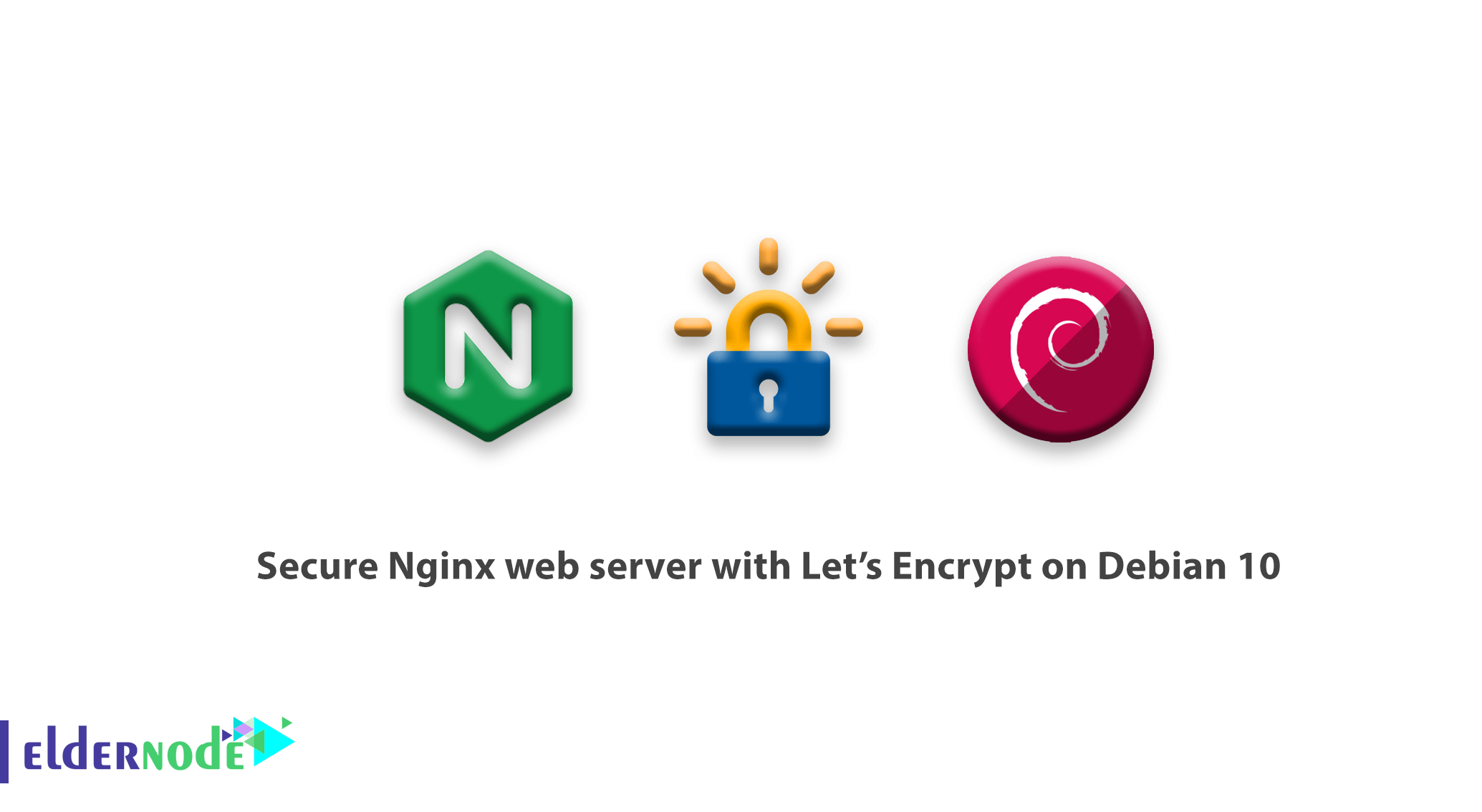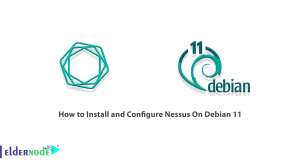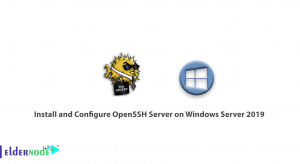
Let’s Encrypt is a Certificate Authority (CA) that provides a straightforward way to obtain and install free TLS/SSL certificates, enabling encrypted HTTPS on web servers. It simplifies the process by providing a software client, Certbot, that attempts to automate most (if not all) of the required steps. Currently, the entire process of obtaining and installing a certificate is fully automated on both Apache and Nginx. In the following, you will use Certbot to obtain a free SSL certificate for Nginx on Debian 10 and set up your certificate to renew automatically.
To let your studies work better, choose your own Ubuntu VPS Server with instant activation.
To let this tutorial work better, please consider the below Prerequisites:
1- A non-root user with sudo privileges and a firewall.
2- One Debian 10 server, to set up, follow our Initial Setup with Debian 10.
3- A fully registered domain name. You can purchase a domain name on Namecheap, get one for free on Freenom, or use the domain registrar of your choice.
4- Both of the following DNS records set up for your server.
5- A record with your_domain pointing to your server’s public IP address.
6- A record with www.your_domain pointing to your server’s public IP address.
7- Nginx installed by following How To Install Nginx on Debian 10. Be sure that you have a server block for your domain. This tutorial will use /etc/nginx/sites-available/your_domain as an example.
Table of Contents
How to secure web server Nginx with Let’s Encrypt on Debian 10
In this guide, you will use a separate Nginx server block file instead of the default file. We recommend creating new Nginx server block files for each domain because it helps to avoid common mistakes and maintains the default files as a fallback configuration. Therefore, let’s review the steps of this tutorial to learn it completely.
Step 1 – How To install Certbot
Before installing the python3-certbot-nginx package, update your package list:
sudo apt updateNext, install the dependencies for the python3-certbot-nginx package, which include the python3-acme, python3-certbot, python3-mock, python3-openssl, python3-pkg-resources, python3-pyparsing, and python3-zope.interface packages:
sudo apt install python3-acme python3-certbot python3-mock python3-openssl python3-pkg-resources python3-pyparsing python3-zope.interfaceNext, install the python3-certbot-nginx package:
sudo apt install python3-certbot-nginx
Step 2 – How To Confirm Nginx’s Configuration
In this step, you see that Certbot is now ready to use, but in order for it to configure SSL for Nginx, we need to verify some of Nginx’s configuration. So, Certbot needs to be able to find the correct server block in your Nginx configuration for it to be able to automatically configure SSL. Specifically, it does this by looking for a server_name directive that matches your requested domain.
If you followed the server block setup step in the Nginx installation tutorial, you should have a server block for your domain at /etc/nginx/sites-available/your_domain with the server_name directive already set appropriately.
To check, open the server block file for your domain using nano or your favorite text editor:
sudo nano /etc/nginx/sites-available/your_domainThen, find the existing server_name line. It should look like this:
If it does, exit your editor and move on to the next step.
If it doesn’t, update it to match. Then save the file, quit your editor, and verify the syntax of your configuration edits:
sudo nginx -tBut if you get an error, reopen the server block file and check for any typos or missing characters. Once your configuration file syntax is correct, reload Nginx to load the new configuration:
sudo systemctl reload nginxCertbot can now find the correct server block and update it.
Step 3 – How To Allow HTTPS Through the Firewall
If you have the ufw firewall enabled, as recommended in the prerequisite guides, you’ll need to adjust the settings to allow for HTTPS traffic.
Use the command below to see the current setting.
sudo ufw statusStatus: active To Action From -- ------ ---- OpenSSH ALLOW Anywhere Nginx HTTP ALLOW Anywhere OpenSSH (v6) ALLOW Anywhere (v6) Nginx HTTP (v6) ALLOW Anywhere (v6)Receiving the above output means, only HTTP traffic is allowed to the webserver.
And to let in HTTPS traffic, allow the Nginx Full profile and delete the redundant Nginx HTTP profile allowance:
sudo ufw allow 'Nginx Full' sudo ufw delete allow 'Nginx HTTP'Your status should now look like this:
sudo ufw statusStatus: active To Action From -- ------ ---- OpenSSH ALLOW Anywhere Nginx Full ALLOW Anywhere OpenSSH (v6) ALLOW Anywhere (v6) Nginx Full (v6) ALLOW Anywhere (v6)Step 4 – How To Obtain An SSL Certificate
Certbot provides a variety of ways to obtain SSL certificates through plugins. The Nginx plugin will take care of reconfiguring Nginx and reloading the config whenever necessary. To use this plugin, type the following:
sudo certbot --nginx -d your_domain -d www.your_domainThis runs certbot with the –nginx plugin, using -d to specify the names we’d like the certificate to be valid for.
If this is your first time running certbot, you will be prompted to enter an email address and agree to the terms of service. After doing so, certbot will communicate with the Let’s Encrypt server, then run a challenge to verify that you control the domain you’re requesting a certificate for.
If that’s successful, certbot will ask how you’d like to configure your HTTPS settings.
Please choose whether or not to redirect HTTP traffic to HTTPS, removing HTTP access. ------------------------------------------------------------------------------- 1: No redirect - Make no further changes to the webserver configuration. 2: Redirect - Make all requests redirect to secure HTTPS access. Choose this for new sites, or if you're confident your site works on HTTPS. You can undo this change by editing your web server's configuration. ------------------------------------------------------------------------------- Select the appropriate number [1-2] then [enter] (press 'c' to cancel):Select your choice then hit ENTER. The configuration will be updated, and Nginx will reload to pick up the new settings. certbot will wrap up with a message telling you the process was successful and where your certificates are stored:
IMPORTANT NOTES: - Congratulations! Your certificate and chain have been saved at: /etc/letsencrypt/live/your_domain/fullchain.pem Your key file has been saved at: /etc/letsencrypt/live/your_domain/privkey.pem Your cert will expire on 2019-10-08. To obtain a new or tweaked version of this certificate in the future, simply run certbot again with the "certonly" option. To non-interactively renew *all* of your certificates, run "certbot renew" - Your account credentials have been saved in your Certbot configuration directory at /etc/letsencrypt. You should make a secure backup of this folder now. This configuration directory will also contain certificates and private keys obtained by Certbot so making regular backups of this folder is ideal. - If you like Certbot, please consider supporting our work by: Donating to ISRG / Let's Encrypt: https://letsencrypt.org/donate Donating to EFF: https://eff.org/donate-leYour certificates are downloaded, installed, and loaded. Try reloading your website using https:// and notice your browser’s security indicator. It should indicate that the site is properly secured, usually with a green lock icon. If you test your server using the SSL Labs Server Test, it will get an A grade.
Step 5 – How To Verify Certbot Auto-Renewal
Let’s Encrypt’s certificates are only valid for ninety days. This is to encourage users to automate their certificate renewal process. The certbot package we installed takes care of this for us by adding a renew script to /etc/cron.d. This script runs twice a day and will automatically renew any certificate that’s within thirty days of expiration.
To test the renewal process, you can do a dry run with certbot:
sudo certbot renew --dry-runIf you see no errors, you’re all set. When necessary, Certbot will renew your certificates and reload Nginx to pick up the changes. If the automated renewal process ever fails, Let’s Encrypt will send a message to the email you specified, warning you when your certificate is about to expire.
Conclusion
In this article, By finishing the above 5 steps, you have successfully learned how to secure Nginx web server with Let’s Encrypt on Debian 10. Also, you installed the Let’s Encrypt client certbot, downloaded SSL certificates for your domain, configured Nginx to use these certificates, and set up automatic certificate renewal. If you are interested in learning more about this subject, find our related article on How to secure Nginx with Let’s Encrypt on Ubuntu 20.04.





What if we need to get rid of Let’s encryption?
After log in to your cPanel, navigate to Let’s Encrypt to reissue the certificate. Then Click on the button Reinstall to renew the certificate. To remove the certificate, click the Remove option.
Could we ensure that Let’s encrypt is trusted?
Since the Let’s encrypt succeeded to receive cross-signatures from IdenTrust and is trusted by all major browsers, we can easily verify its security
Is it possible to disable SSL?
In case you need to disable it on a domain, follow the below path:
• Log in to the Account Control Center (ACC)
• In the left sidebar, click Security.
• In the drop-down, click Manage Your SSL.
• You will be able to see which domains have Let’s Encrypt enabled here.
• On the next page, confirm your decision by clicking Disable Let’s Encrypt.
How can I remove Cerbot certificate?
If you are eager to remove it from live, archive and renewal directories, type “certbot delete” and choose the certificate to delete from the list.